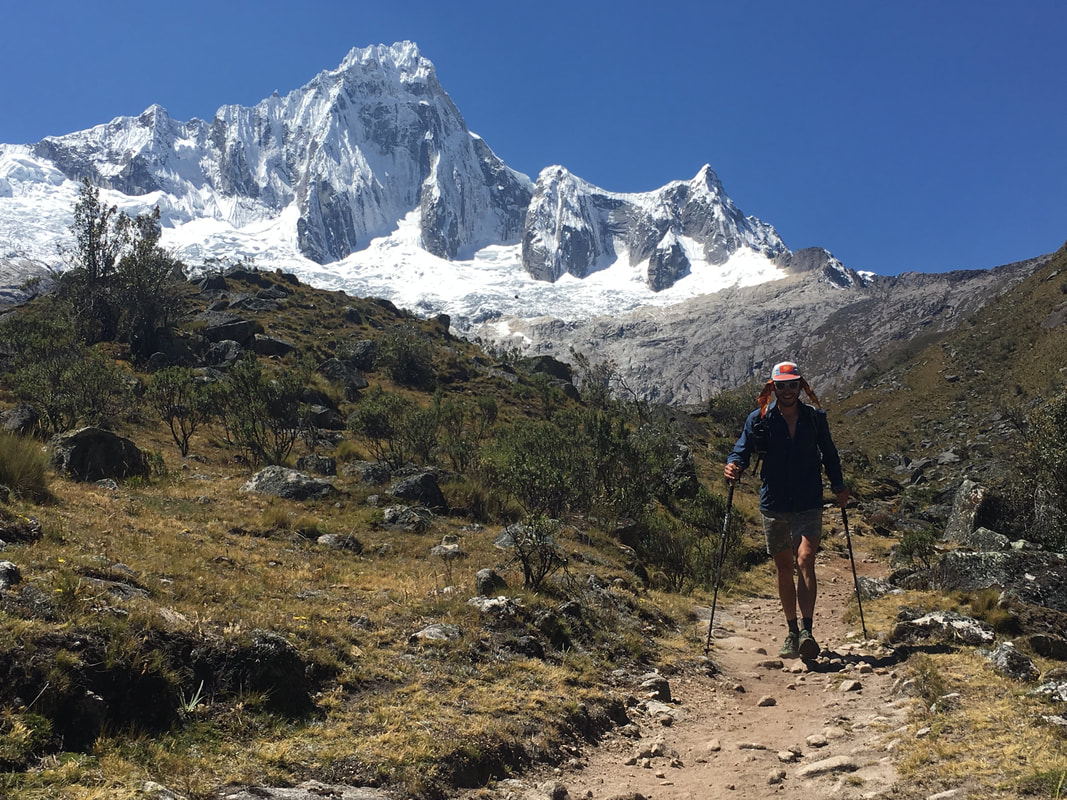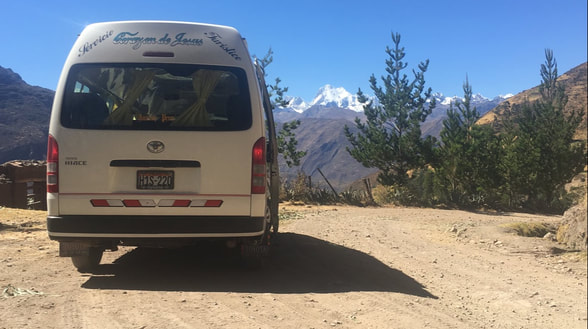Outfitter
La Cima Logistics is the recommended outfitter. They can take care of your Lima and Huaraz transportation and accommodation, organize guides, porters, donkeys, and so on. With no conflict of interest, I recommend La Cima because they seamlessly bridge the gap between North American/ European and Peruvian business mindsets/expectations, and because I have had uniformly positive experiences hiring their services. The owner, Chris, is originally from Minnesota, USA. E-mail directly to Chris at [email protected], whatsapp at (51) 943 914 063, or check out www.lacimalogistics.com
Money
The currency is Peruvian soles (S/3.70 ~ $1 USD). Bring S/300 cash per person for fees while in the Huayhuash. Tip private drivers S/10 for shorter rides and S/20 for longer rides. For a relatively self-sufficient trip (including airfare, accommodation, etc.), expect to pay $2,000 USD, and more for a more supported adventure.
Getting to Huaraz
Book a flight to Lima, a bus ticket on Cruz del Sur from Lima to Huaraz and all the accommodation you need on AirBnB or stay in local hotels or hostels. Make sure your phone is unlocked and get a Peruvian SIM card. Use Uber instead of taxis (cheaper and safer).
Acclimatization
From Huaraz, I recommend an initial acclimatization day hike to Churup Lake (4450m; ~$20 USD for a taxi each way; 1h drive & 2h hike each way). I then recommend getting acclimatized to sleeping above 4000m by doing the Santa Cruz Trek over 2 days (1 if you're keen). It is 48km and crosses a 4800m pass called Punta Union (~$90 USD for a taxi each way, 5h to Vaqueria, 3h from Cashapampa) and has incredible views of Taulliraju.
Huaraz to the Huayhuash
The Alpine Circuit begins in Rondoy, a nondescript homestead at the foot of the north end of the Huayhuash and situated on the road between Llamac and Quartelhuain (about 15k E of Llamac and 4km S of Quartelhuain). The ride from Huaraz is 4-5h, with the first half (to Chiquian) being on pavement and the second half on a gravel road with a soft shoulder and much exposure. Fees of S/50 per person are extracted in Llamac and S/20 per person in Pocpa. Please do not try to haggle or avoid paying fees as it jeopardizes access to the Alpine Circuit (see Access Issues). Until ~2005, approaching the Huayhuash involved a 2-day walk from Chiquian. The roads from Chiquian to Llamac and then from Llamac to Rondoy were completed in the 2010s, improving access to the Huayhuash. Between Llamac and Rondoy, the road passes under the Susana Mine (lead, silver, zinc).
There are thee ways of getting to Rondoy, with increasing levels of convenience and cost (USD$40 - $180):
There are thee ways of getting to Rondoy, with increasing levels of convenience and cost (USD$40 - $180):
- Least convenient & cheapest. During tourist season, catch the daily collectivo (collective taxi) that runs from Huaraz to Chiquian and another to Llamac, leaving around 5am from Huaraz. Inquire locally about where and when to catch it and current cost. Then try to hitch a ride from Llamac to Rondoy (or walk for 4h). The return collectivo leaves Llamac around 1pm.
- There are two Huaraz hostels (Krusty Hostel and Big Mountain Hostel) that run frequent Valley Circuit trips. It might be possible to hitch a ride to the Alpine Circuit with them if they have space.
- Most convenient & expensive. Hire a taxi. Two recommended drivers are: Jacinto Mendoza +51 998 967 136 (whatsapp) and Solano Zaragoza Villanueva (Sr. Solano) +51 969 504 066 (whatsapp). Communicate with them in Spanish (preferable; pro tip: use Google Translate) or English. Cost for a Huaraz-Rondoy trip is $120-$180 USD each way + S/20 tip.
Equipment and Food
Given the quantity of elevation gain and loss, I recommend going light or hiring porters. Expect temperatures around 10C during the day and -5C at night. These are the non-obvious staples that I recommend:
Camping & Hiking
Technical
Food
- 30-40L pack
- S/300 per person for trekking and camping fees, extracted locally. Please do not try to haggle or avoid paying fees as it jeopardizes access to the Alpine Circuit (see Access Issues).
Camping & Hiking
- An ultralight tent (ideally < .5 kg such as the Hyperlite; leave the mesh/body in Huaraz)
- A sleeping bag rated to -5C + lightweight inflatable mattress
- A light, efficient stove (e.g., Jetboil) with one fuel canister per 2 people
- Trail-running shoes (comfort and traction on sloping dirt/grass are key) with optional micro gaitors
- Hiking poles
- A smartphone with a mapping app (e.g., MapOut), the gpx track loaded onto it, portable smartphone batteries and cable
- A printout of the route description
- A physical map (available in Huaraz or at pixmap.org)
- A GPS communication device (e.g., Garmin inReach) to use in case of emergency, to get weather forecasts, and to communicate with a taxi driver if necessary.
- Water filter or water purification tabs
Technical
- Rope, harness, slings. For most parties, a 25m 7mm rope, lightweight harnesses, belay/rappel devices, and slings for belaying up to and rappelling from Garagocha Col and getting over Rasac Col are recommended. For parties whose members are all comfortable soloing blocky 5.0 rock (up and down) at altitude with a pack and stepping across a few small crevasses unroped, all of these materials may be expendable.
- Crampons. For most parties, ultralight crampons (e.g., OuterStar) will be ideal for getting up the glacier to Rasac Pass. Note that the only ice slope that is >15 degrees is the final slope approaching Rasac Col, which is avoidable on the left via easy rock scrambling.
- Ice axe. An ice axe is probably unnecessary for the majority of parties, especially if they have hiking poles.
- Ice screws and pickets. These are also unnecessary for most parties.
- Helmets. You decide. It’s your head.
Food
- For each day, I bring ~ 2000 calories:
- 1 cup of granola with skim milk powder
- 4 energy bars (e.g, Clifbars)
- a few crackers with dehydrated humus
- a 700+ calorie freeze-dried meal
- coffee powder


